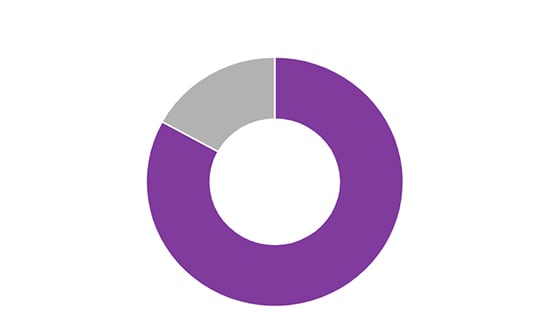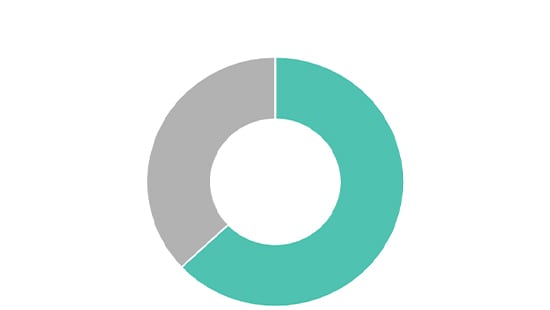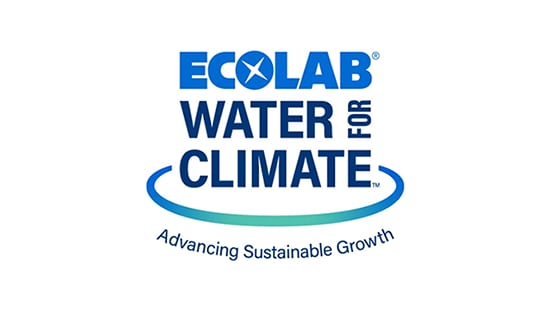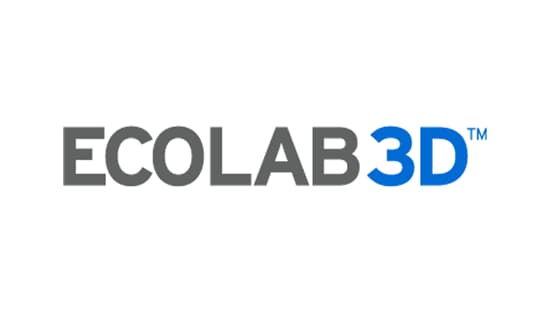Bilan de la situation de l’intendance de l’eau à l’ère de l’IA
Le monde connaît une demande croissante en matière d’énergie et d’utilisation de l’eau, principalement en raison de technologies transformatrices telles que l’IA, ainsi que des événements météorologiques extrêmes et d’une économie en pleine évolution.
- D’ici 2030, on estime que la croissance liée à l’IA nécessitera une énergie supplémentaire équivalente aux besoins annuels de l’Inde1 et autant d’eau pour répondre aux besoins annuels en eau potable des États-Unis2.
- Les centres de données pourraient utiliser plus de 1 trillions de gallons d’eau douce par an d’ici 20273.
- On prévoit un écart de 56 % entre l’offre et la demande d’eau douce d’ici 20304 et la demande d’eau devrait augmenter de 30 % d’ici 20505.
En tant que leader mondial du développement durable, Ecolab aide à résoudre ces défis liés à l’eau. Notre étude 2025 fournit des informations sur les perceptions et les préoccupations les plus récentes en matière d’eau, aidant les entreprises, les gouvernements et les organisations à but non lucratif à développer des stratégies efficaces en matière d’eau. Il est essentiel de comprendre la perception du public pour éclairer ces stratégies et avancer vers un avenir sûr en matière d’eau.
Principales conclusions de l’étude Watermark d’Ecolab 2025
L’eau : le coût caché et l’opportunité de l’IA
Si de nombreux consommateurs reconnaissent l’importante consommation d’énergie de l’IA, ils sont moins nombreux à être conscients de son empreinte importante sur l’eau. Ce manque de sensibilisation est particulièrement notable en Asie-Pacifique, en Inde, au Moyen-Orient, en Afrique et en Amérique latine.
Perceptions des consommateurs concernant la mesure dans laquelle chaque ressource est actuellement utilisée pour soutenir les opérations d’IA :

Chine
81% Électricité
77 % Eau

IMEA
78% Électricité
61% Eau

Amérique latine
68% Électricité
51% Eau

Asie-Pacifique
60% Électricité
43% Eau

Europe
59% Électricité
46% Eau

États-Unis
55% Électricité
46% Eau
Les données illustrent les pourcentages d’accord :
Les entreprises devraient tirer parti de l’IA
pour une utilisation responsable des ressources naturelles
Confiance accordée aux entreprises pour gérer de manière responsable les demandes en puissance des opérations d’IA

IMEA
2026
76%
63%

Chine
2026
72%
77%

Amérique latine
70%
49%

Europe
2026
54%
37%

Asie-Pacifique
51%
37%

États-Unis
49%
39%

Gestion intelligente de l’eau : les consommateurs veulent que les entreprises réutilisent l’eau intelligemment
Malgré la croyance largement répandue chez les consommateurs selon laquelle les entreprises devraient donner la priorité à une gestion de l’eau intelligente pour répondre au stress hydrique, ils sont moins nombreux à penser que ces entreprises mettent en pratique avec succès les solutions de réutilisation de l’eau.
Pourcentage de consommateurs qui pensent que les entreprises réduisent, réutilisent, recyclent, rétablissent et récupèrent l’eau dans leurs activités quotidiennes.

États-Unis
43%

Europe
44%

Amérique latine
48%

Asie-Pacifique
48%

IMEA
67%

Chine
74%
Il existe un large consensus parmi les consommateurs du monde entier :
Les entreprises doivent accorder la priorité aux investissements dans les technologies et infrastructures permettant de renforcer la résilience des ressources en eau.
eau du changement climatique :

Amérique latine
84%
85%

IMEA
2026
82%
82%

Chine
2026
77%
76%

Europe
2026
72%
71%

Asie-Pacifique
71%
70%

États-Unis
68%
67%
Les entreprises qui adoptent des pratiques responsables en matière d’eau peuvent s’attendre à un vif intérêt de la part des consommateurs.
Pourcentage de consommateurs prêts à
rechercher activement plus d’informations
de la part de ces entreprises :

Amérique latine
82%

IMEA
2026
78%

Chine
2026
68%

Asie-Pacifique
61%

Europe
2026
61%

États-Unis
61%
Partenariats dans le domaine de l’eau
Aucune entité ne peut à elle seule relever les défis liés à l’eau. En forgeant des partenariats puissants, les entreprises, les gouvernements et les communautés peuvent accélérer l’action coordonnée pour trouver des solutions et construire un avenir résilient en matière d’eau pour tous.
Dans la plupart des régions, les consommateurs considèrent que les entreprises (y compris les fabricants) ) et les gouvernements sont également responsables de la conservation de l’eau. Cependant, tous deux continuent de faire l’objet de critiques pour ne pas contribuer autant que les particuliers, les associations à but non lucratif et les organisations de conservation.
Les données ci-dessous détaillent la perception des consommateurs concernant les efforts déployés jusqu’à présent par chaque entité pour préserver l’eau dans leur pays :

Amérique latine
42% Domaines d'activité
55% Individus
48% Gouvernement
60% Organismes à but non lucratif

Europe
2026
45% Domaines d'activité
56% Individus
45% Gouvernement
54% Organismes à but non lucratif

États-Unis
47% Domaines d'activité
58% Individus
48% Gouvernement
56% Organismes à but non lucratif

Asie-Pacifique
2026
48% Domaines d'activité
49% Individus
46% Gouvernement
50% Organismes à but non lucratif

IMEA
2026
63% Domaines d'activité
69% Individus
79% Gouvernement
67% Organismes à but non lucratif

Chine
2026
80% Domaines d'activité
79% Individus
84% Gouvernement
79% Organismes à but non lucratif
Malgré les défis mondiaux liés à l’eau, les consommateurs font preuve d’un grand optimisme quant à notre capacité à les affronter.
Une majorité écrasante (plus de 60 % des consommateurs, toutes régions confondues) pense que le stress hydrique
peut être traité efficacement.
La mesure dans laquelle les consommateurs
conviennent que le stress hydrique
peut être traité efficacement :

Amérique latine
84%

IMEA
2026
83%

Chine
2026
73%

États-Unis
67%

Europe
2026
66%

Asie-Pacifique
61%
Événements météorologiques extrêmes
Les consommateurs ont l’impression que les changements climatiques et l’augmentation des catastrophes naturelles exacerbent le stress hydrique,
ce qui pose des problèmes de disponibilité et de qualité de l’eau.
Pourcentage de consommateurs qui établissent un lien entre le changement climatique et l’aggravation du stress hydrique:

IMEA
2026
81%

Chine
2026
80%

Amérique latine
79%

Asie-Pacifique
2026
69%

Europe
2026
69%

États-Unis
65%
Les consommateurs exigent clairement que des mesures soient prises pour lutter contre le changement climatique, ce qui place une attente forte
sur le leadership des entreprises et des gouvernements.
Pourcentages de consommateurs qui considèrent
très important pour les gouvernements et les entreprises de prioriser les efforts visant à réduire
l’impact du changement climatique :

Amérique latine
87%
88%

IMEA
2026
81%
81%

Chine
2026
76%
77%

Europe
2026
71%
71%

Asie-Pacifique
70%
69%

États-Unis
67%
67%
Tendances annuelles notables
Alors que l’accès à une eau propre et sûre demeure un enjeu mondial crucial, le niveau de préoccupation des consommateurs est particulièrement notable.
Dans quelle mesure les consommateurs sont-ils préoccupés par la propreté et la salubrité de l’eau, selon la région ?

Chine
2026
96%

Amérique latine
92%

États-Unis

Europe
2026
69%

IMEA
2026
67%

Asie-Pacifique
2026
63%
Dans la plupart des régions, les consommateurs identifient systématiquement l’agriculture et
l’industrie agro-alimentaire comme les secteurs les plus responsables de l’utilisation de l’eau.
Agricole
Industrie agroalimentaire

IMEA
2026
52%
37%

Amérique latine
48%
44%

Asie-Pacifique
47%
36%

Europe
2026
47%
33%

États-Unis
43%
31%

Chine
2026
29%
28%
Améliorer l'intendance de l'eau
Depuis plus de 100 ans, Ecolab se consacre à la protection des ressources vitales en accordant la priorité à l'intendance de l'eau dans nos propres activités et dans celles de nos clients. Dans plus de 40 secteurs d'activités à travers le monde, Ecolab aide les entreprises à répondre aux défis liés à l'eau et au changement climatique en réduisant leur consommation d'eau dans leurs procédés essentiels. Nous aidons nos clients à avoir un impact durable et à obtenir un retour sur investissement exponentiel (eROI) en alignant les objectifs de croissance de l'entreprise, climatiques et relatifs à l'eau.
Nos solutions
Avec plus de mille milliards de gallons d'eau gérés par an, Ecolab associe son programme Connected Chemistry™
à des informations numériques et à une expertise des secteurs pour favoriser la durabilité et la croissance en synergie.
Découvrez comment Ecolab peut vous aider à adopter une approche intelligente de la gestion de l'eau dans vos activités.

Identifier les opportunités avec Smart Water Navigator

Adopter une approche au niveau de l'entreprise avec Water for Climate™ d'Ecolab

Gérer les performances en matière d'eau avec la technologie 3D TRASAR™

Visualiser les données avec les services numériques ECOLAB3D™
Nos projets
Les entreprises peuvent prospérer si elles se penchent sur la résilience en matière d'eau. Les cas clients suivants montrent comment chez Ecolab, nous aidons nos clients à avoir un impact positif sur leurs objectifs commerciaux, climatiques et relatifs à l'eau :
Nos partenariats
Nos partenariats avec des organisations non gouvernementales (ONG) de premier ordre renforcent notre compréhension et notre capacité à agir sur les défis mondiaux auxquels notre entreprise, nos clients et les communautés sont confrontés. Voici ce qui est inclus :
- Bloomberg Law, « AI Computing on Pace to Consume agrandir Energy Than India, Arm Says », 2024 avril : news.bloomberglaw.com/artificial-intelligence/ai-computing-on-pace-to-consume-more-energy-than-india-arm-says↵
- Analyse Ecolab des données de Lei, N., & Masanet, E. (2022) et Goldman Sachs (2024)↵
- Rendre l’IA moins « assoiffée » : découvrir et traiter l’empreinte secrète de l’eau des modèles d’IA : www.goldmansachs.com/insights/articles/AI-poised-to-drive-160-increase-in-power-demand et TIME, « Comment l’IA alimente un boom de la demande de centres de données et d’énergie » : time.com/6987773/ai-data-centers-energy-usage-climate-change/↵
- World Resources Institute : « Setting Enterprise Targets : Modeling Downstream Water Use and Consumption » : Setting Enterprise Targets (Fixer des objectifs pour l’entreprise) : Modélisation de l’utilisation et de la consommation d’eau en Downstream | World Resources Institute↵
- World Resources Institute, « Sécuriser l’eau douce pour tous » : www.wri.org/freshwater↵


